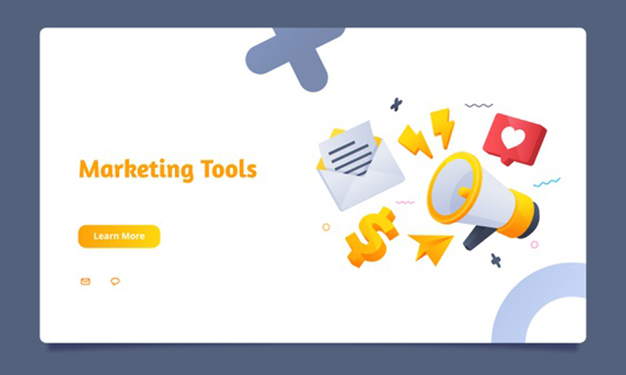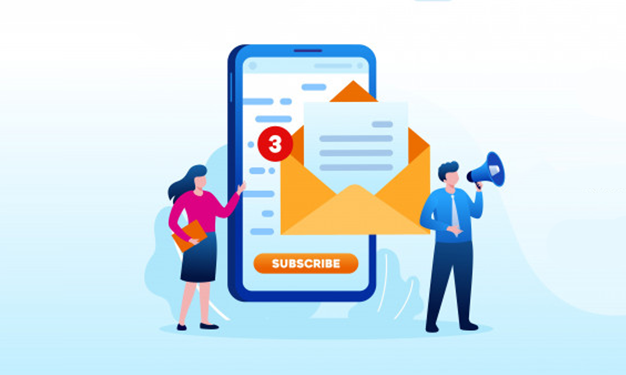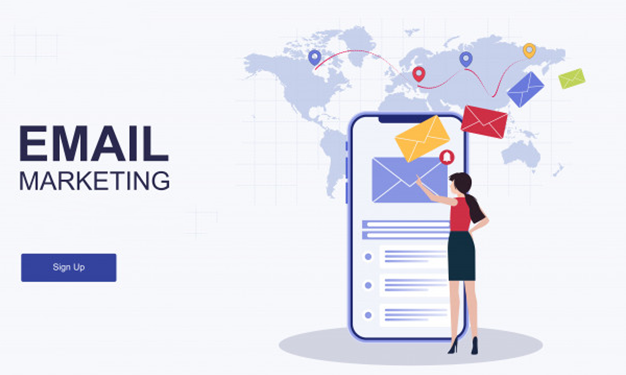Email Marketing
Creating an email marketing plan can be challenging for small business owners. They often don’t have the time to plan for much more than announcements and promos. But to keep your subscribers engaged, you’ll need much more than that. Ideally, your emails will be something that they look forward to reading, so that they’ll keep your business in mind even when they’re not yet ready to buy. In other words, you shouldn’t send out the same types of emails all the time. This guide lists the different types of email campaigns you can send out to keep your subscribers engaged, and even drive up sales.




Different Types of Marketing Email
Content Announcement Email
Content Announcement Email This is one you probably already know and love. You know, the one where you announce your next sale, ebook, webinar, coupon, free trial ... and the list goes on. This email is used to describe and promote a particular marketing offer -- one single offer -- with a call-to-action that links to a targeted landing page made for that specific offer. When it comes to designing an email for a specific offer, the main component to keep in mind is the offer itself. You want the copy to be brief but descriptive enough to convey the offer's value. In addition, make sure your email's call-to-action (CTA) link is large, clear, and uses actionable language. You can also include a large CTA image/button underneath to make the action you want email readers to take crystal clear.
Product Update Email Product emails are tricky. People generally don't want to receive these often, and they're typically not as interesting or engaging as something like an offer email. That said, it's important to keep these emails simple and straightforward. Many companies choose to send weekly or monthly product digests to keep their customers or fan base up-to-date with the latest features and functionalities. And no matter how much a customer loves your business, it's still work for them to learn how to use new features or learn why a new product is worth their investment.
Digital Magazine or Newsletter Do you maintain a business blog for your company? Are you a magazine or media outlet? No matter which of these categories you fall into, many companies choose to send a roundup of stories or articles published weekly or monthly. And if you truly want people to read these email roundups, it's critical that you share them in a visually appealing way. Within these roundup emails, it's a good idea to use an image paired with a headline, a brief summary or introduction, and a CTA for recipients to read more. This simple format will allow you to use visuals to attract the reader to each article while still giving you the ability to feature multiple articles -- without sending a super lengthy email.
Event Invitation Email can be a great vehicle for promoting an upcoming event you're hosting. But if you want to invite your contacts to an event and motivate them to register, it's extremely important to clearly showcase why that event is worth their attendance. A great way to do so is through visuals. A lot of events cost money to attend, and most cost a pretty penny. So if you want to attract registrants, cut down on the copy and show potential registrants why the event will be awesome.
Dedicated Send Every now and then, you may want to send a dedicated email to a certain group of people. For example, if you're hosting a conference or event, you might want to send a dedicated email just to event registrants to alert them of any new event updates they should be aware of (like in the screenshot above). Or if your business is community based, it might be a good idea to send a monthly email to welcome all your new members.
Co-marketing Email Co-marketing is when two or more complementary companies partner together for some mutually beneficial task, event, or other promotion. The main draw of co-marketing is to leverage the audience of another company to increase your reach. Sometimes the relationship results in a strategic announcement; other times it's as simple as a joint webinar. Let's use the latter for an example of how co-marketing emails work, and why they're so beneficial: Let's say you and another company decide to do a webinar together on a particular subject. As a result, that webinar will likely (pending your arrangements) be promoted to the email lists of both of your companies. This exposure to a list that is not your own is one of the key benefits of co-marketing partnerships.
Interest-Based Networks Examples: Goodreads, Houzz, Last.fm Why people use these networks: To connect with others around a shared interest or hobby. How they can benefit your business: If there’s a network devoted to the kind of products or services you provide, these networks can be a great place to engage with your audience and build brand awareness.
Social Media Send Wait ... what does social media have to do with email? Well, if you're making good use of LinkedIn Groups or Google+ Events, email has everything to do with social media. As the administrator of LinkedIn Group, when you send a LinkedIn Announcement, you're directly reaching a LinkedIn user's inbox. And when you create a Google+ event, sending the invite directly sends you into users' email boxes as well. Without having to create lists or collect email addresses, you automatically have access to users' email, but be sure to tap into these resources with care.
Internal Updates Don't neglect a very important audience for your company: your employees. Many companies, especially if they're on the larger side, choose to send internal updates or newsletters to their employees to keep them in the know about the latest company information -- whether it be new product updates, marketing offers, or events. With these emails, it's less about the beauty, and more about the clarity. The most important formatting tip for these types of emails is to arrange the information in a simple and helpful way. Once you've nailed your formatting, it's simply a matter of highlighting the most critical information associated with each offer or update so its messaging is crystal clear to everyone.
Confirmation Email How frustrating is it to book a flight or register for an event and not receive an automatic confirmation email? I know that personally, every time I make an online transaction, I wait impatiently to see that my transaction was complete. After all, nobody wants to worry that they're first payment wasn't processed, only to click the payment button again and get charged twice. What bothers me most about so many businesses' confirmation emails are two things: when the subject lines are vague, and when the information I actually want to confirm isn't immediately evident when I open the email. Confirmation emails should be just that -- confirmation emails.
Thank-You Email Whenever a prospect, lead, or customer fills out a form on one of your landing pages, a kickback email should automatically get triggered after their submission. Depending on the form, these kickback emails are often referred to as thank-you emails. These emails are mainly for the sake of fulfilling your promise to the user, and storing the information you promised them safely in their inbox. How frustrating would it be if you downloaded an ebook, and then forgot where you stored the link to the PDF? Kickback emails solve that problem.
Thank-You Email Another type of transactional email, the welcome email is the perfect option for thanking and providing more information to people who have signed up for your newsletter, product trial, or other offer. The elements you include in a welcome email will depend on the specifics of what you're offering. But in general, you can use the email to showcase your brand's personality and to highlight the value that recipients can expect to receive. If you're welcoming new users to a product or service, the welcome email is a great place to explain how everything works and what users need to do in order to get started.
Lead Nurturing Email Depending on the specific action a persona takes, you may want to enroll them in a lead nurturing campaign. Lead nurturing emails consist of a tightly connected series of emails containing useful, targeted content. As their name suggests, these emails are used to nurture leads through the marketing funnel into a position of sales readiness. For example, let's say you sent your list a marketing offer email. You might then set up a lead nurturing workflow that triggers another email about a complementary offer or piece of content to everyone who converted on that initial offer. The logic is simple: By identifying a particular group of contacts that you already know are interested in a specific topic, you and can follow up with more relevant and targeted content that makes them more likely to continue their relationship with you.
